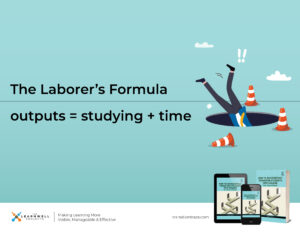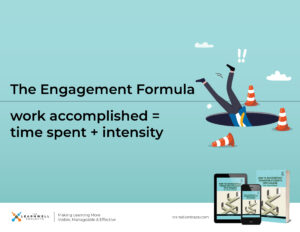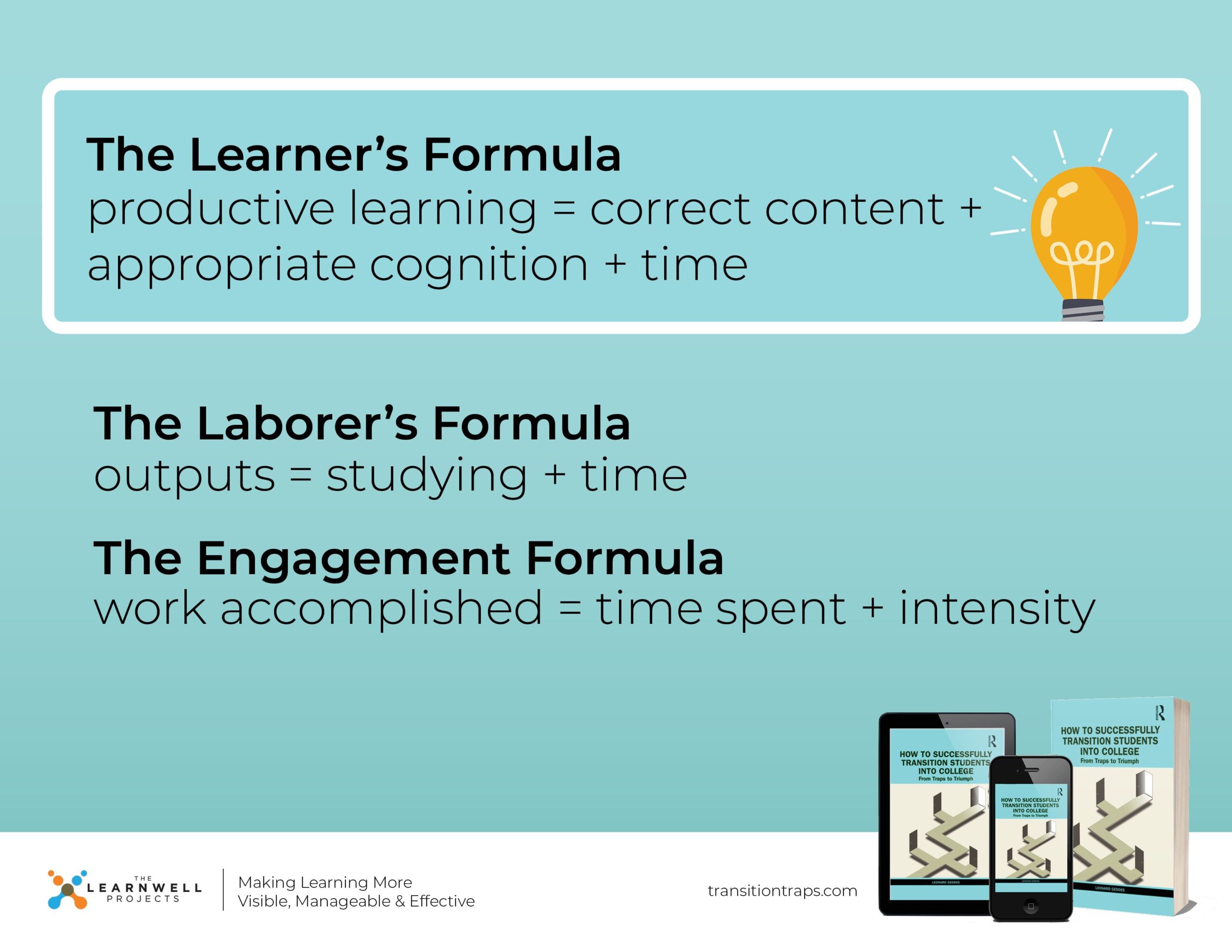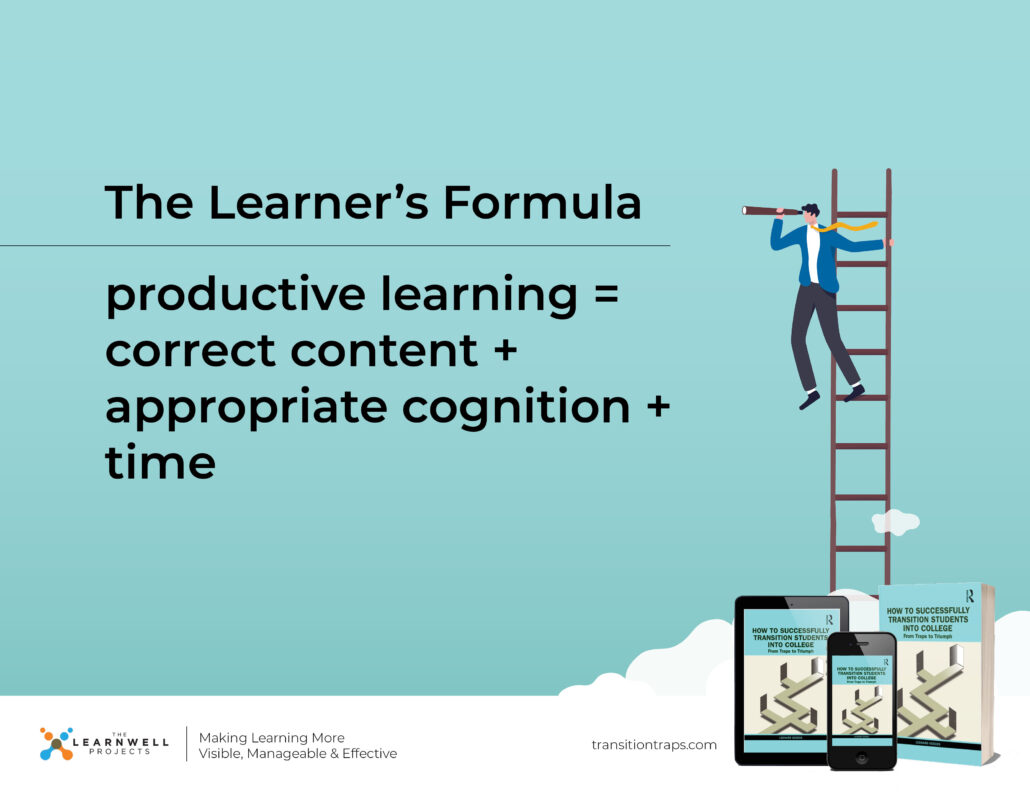As college educators, we constantly seek ways to enhance our students’ learning experiences and outcomes. Understanding the underlying approaches students use to tackle academic work can provide invaluable insights into their success or struggles. There are three distinct formulas students typically employ in their academic endeavors: the Laborer’s Formula, the Engagement Formula, and the Learner’s Formula. Each of these approaches significantly impacts the quality of learning and performance in assessments.
The Three Formulas
The Laborer’s Formula
 Most students default to the Laborer’s Formula, a method that relies heavily on sheer effort and time investment. This approach often proves successful in high school, where diligence and hard work can yield good grades. However, the same strategy in college can lead to burnout and suboptimal results, as it does not necessarily foster the type of effective thinking that generates deep understanding.
Most students default to the Laborer’s Formula, a method that relies heavily on sheer effort and time investment. This approach often proves successful in high school, where diligence and hard work can yield good grades. However, the same strategy in college can lead to burnout and suboptimal results, as it does not necessarily foster the type of effective thinking that generates deep understanding.
The Engagement Formula
 The Engagement Formula, as discussed in Cal Newport’s How to Become a Straight-A Student, emphasizes the importance of intense focus and immersion in academic tasks. Newport’s interviews with students suggested that this formula sets high achievers apart from their peers. However, there’s a potential mischaracterization here: students may perceive intensity as the key differentiator, but this might not capture the full picture of effective learning strategies.
The Engagement Formula, as discussed in Cal Newport’s How to Become a Straight-A Student, emphasizes the importance of intense focus and immersion in academic tasks. Newport’s interviews with students suggested that this formula sets high achievers apart from their peers. However, there’s a potential mischaracterization here: students may perceive intensity as the key differentiator, but this might not capture the full picture of effective learning strategies.
The Learner’s Formula
The Learner’s Formula, which I advocate in my book How to Successfully Transition Students into College: From Traps to Triumphs, represents the optimal approach for academic success. This formula emphasizes the quality of knowledge over the quantity of time spent studying. By focusing on improving students’ cognitive diversity and dexterity, they can achieve deeper learning, elevating their performance and satisfaction.
Why the Learner’s Formula is Superior
The Learner’s Formula stands out because it aligns with educational principles that promote significant and lasting learning. Here’s why it should be the preferred approach:
- Deeper Understanding: This formula encourages students to engage with the material on a conceptual level, fostering critical thinking and the ability to apply knowledge in various contexts.
- Efficient Use of Time: Rather than spending endless hours on rote memorization, students learn to study smarter by identifying key concepts and understanding their applications.
- Improved Assessment Performance: By producing high-quality knowledge, students are better equipped to excel in exams and assignments, as they can demonstrate a thorough grasp of the subject matter.
- Preparation for Future Scholarship and Career Advancement: The cognitive dexterity students gain by using the Learner’s Formula imbues them with the requisite skills needed for effective knowledge work.
Implementing the Learner’s Formula in Your Classroom
As educators, we play a crucial role in guiding students towards effective learning strategies. Here are some practical steps to integrate the Learner’s Formula into your teaching:
- Establish the Proper Academic Work Infrastructure: Students need certain informational elements to convert course notes into acceptable knowledge products.
- Define the Contribution: Students often struggle not due to a lack of contributions but because they cannot make the correct qualities of contributions. This is why they feel cheated when they don’t perform well.
- Properly Divide the Labor: Research suggests that 80% of academic work in college occurs away from the classroom. I call this the 80/20 Trap in my book. Learning center professionals can be critical allies in helping students work effectively away from class, which is required for success in class.
Reflecting on Your Students’ Approach
Which formula do your students use? Understanding this is the first step in unlocking their academic potential. Reflect on their current strategies and consider how you can steer them towards the Learner’s Formula for enhanced learning and performance.
Questions for Reflection
- How can you differentiate between hard work and effective learning in your classroom?
- What steps can you take to promote the Learner’s Formula among your students?
- How do you currently assess the depth of your students’ understanding, and how might you improve this?
By critically examining the formulas your students use, you can better support them in achieving academic excellence and fostering a lifelong love of learning. Remember, using the wrong formula wastes effort, while using the correct formula makes success certain and repeatable.
Summer is an optimal time to plant the seeds of success. Leave a comment to share how you are prepared to get your students using the correct formula!
Students sharing their stories of using the wrong formula.



